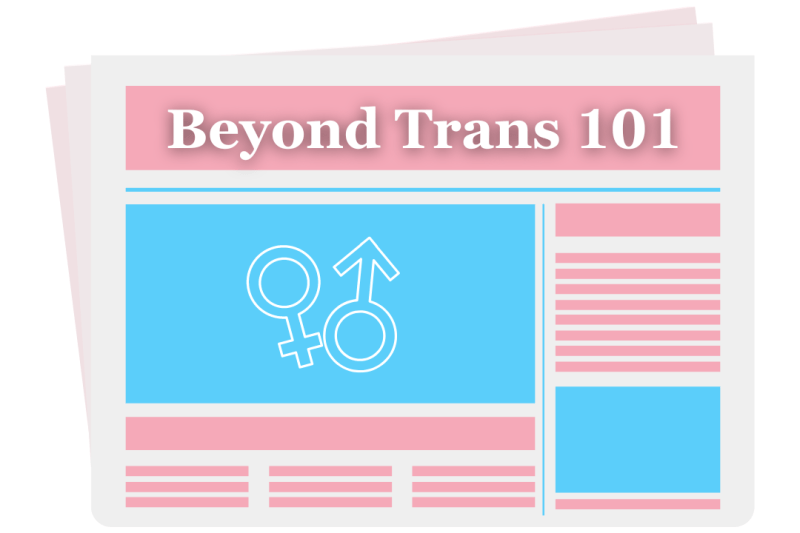Coming into the 2024 election, transgender rights are dominating the culture war conversation. Looking at recent coverage from many popular news outlets brings up a range of reporting on bills restricting trans rights, advocates fighting for trans rights and more. However, the media doesn’t always cover trans issues accurately, causing harm.
A new generation of trans journalists is working to fix that.
The Trans Journalists Association (TJA) was created in 2020 to “support trans journalists in their workplaces … providing guidance to newsrooms for more accurate, sensitive coverage of trans communities, and providing tools to help employers make their workplaces more supportive for trans employees,” according to their website.
Kam Burns, a speaker on ONA23’s “Beyond Trans 101: How to Plan and Manage Better Trans Coverage” panel, is a founding member of the TJA.
Issues Burns and other TJA members noticed in media coverage of trans people included not using a subject’s pronouns correctly, misusing medical terms or simply not including trans voices in coverage.
Burns and other TJA members have hosted multiple conference panels on trans coverage, a type of “trans coverage 101,” Burns said. This year at ONA23, Burns hopes that the panel and corresponding table talk go beyond the basics and delve deeper into making trans coverage “innovative, impactful and nuanced.”
“The main overarching theme of our panel is about the sorts of questions that you should be asking yourself when you are preparing to do coverage of trans people and trans lives,” said Ellery Jones, one of the panelists. “I think, in broad strokes, what we are asking people to do is to slow down and really consider the impact of your reporting and why you’re doing this story and how you are doing the story.”
Jones noted that the ACLU has tracked a record number of anti-trans bills being introduced and passed this year, and that journalists are the “jurists” in covering these bills.
“We’re very much at the nexus of this [because] not only are we are responsible for covering this legislation, but we also play a role in the developments in the patterns and in the progression of this legislation,” she said.
Jones and Burns both noted that much of the development of the panel came from Graph Massara’s analysis in the Columbia Journalism Review, “The complexities and nuances of transgender coverage.”
The analysis asks seven key questions for reporters to consider when covering trans people:
- Whose voices are heard, and is anyone missing?
- What is framed as “normal” versus “dangerous”?
- Is the story proportional?
- What’s the political context?
- Are sources quoted and described appropriately?
- Would this sound bad if it were written about some other group?
- Does the story treat trans people as fully human?
Jones said that these questions help to fill in “gaping holes” that she often finds in coverage of trans people, and that by considering them in coverage, journalists can make their stories more nuanced and equitable.
“When you’re not trans yourself as a journalist, it’s very easy to not have the knowledge of that nuance, and gloss over these details,” Jones said. “And you know, though, the worst coverage, it’s the hardest to read. It just feels like there’s just these big gaping holes in the story that I can recognize, it’s so glaringly obvious for me.”
Burns noted that it’s not just up to the reporters to ask themselves these questions, but also editors and newsroom leadership.
“I just really hope that newsroom leadership comes to [the panel] because a lot of times reporters … want to tell these more complex, nuanced stories and they don’t have the power to make that happen,” Burns said. “And they’re fighting back against a really dominant narrative. And if you’re the only trans person in your newsroom, that can be very intimidating, which is often the case.”
The “Beyond Trans 101: How to Plan and Manage Better Trans Coverage” panel will be hosted on Friday, Aug. 25 at 2:30 p.m. in Salon I on the fifth floor of the conference hotel. The panel will be followed by a table talk.






